Sendai: The Dark Horse of Japan
Top Photo: kimkimkaoru on PhotoAC
Traveling to Japan entices travelers to eat takoyaki in Osaka, visit Kiyomizudera in Kyoto, see the A-bomb Dome in Hiroshima and even roam around the capital city of Tokyo. Those are the all too common responses from those who have traveled to the land of the rising sun; almost as if it’s an unwritten requirement. However, there is one city rarely mentioned by travelers. Lying in the northeastern corner of the Honshu island, with mountains on one side and the Pacific Ocean on the other, Sendai is an often ignored location by travelers.
Sendai is the largest city in the Tohoku region and is the capital of Miyagi Prefecture. It was the area ruled over by the One-Eyed Dragon himself, Date Masamune. This history of Sendai dates back to 1600 after the Battle of Sekigahara when Date Masamune decided it was a better spot to watch over his territories. Sendai Castle or Aoba Castle, was situated on a hill overlooking the city. The castle itself is gone as it was destroyed in a bombing in 1945. A museum sits in its place as well as a monument to Date Masamune.
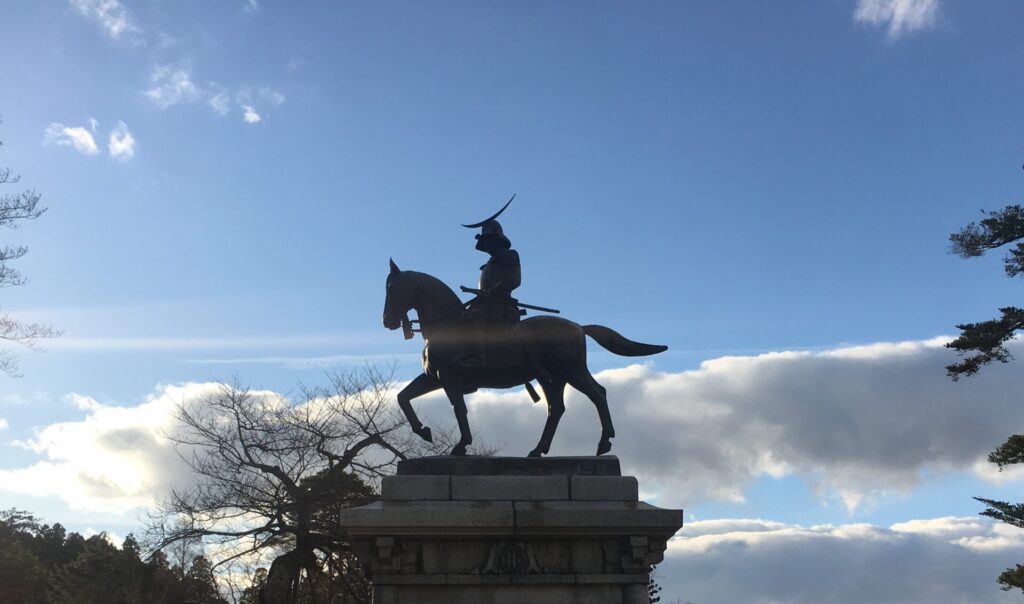
Photo by Dustin Zofchak
The city, while looking like a typical Japanese city, does well merging with its natural surroundings. Tohoku was the last region to join in the unification of Japan after the Kunohe Rebellion. Due to this, it is believed Tohoku has a stronger connection to nature than the rest of the country. Walking to the castle is basically a nature walk. When looking at the city from the castle, you’ll see the fusion of nature and modernity.
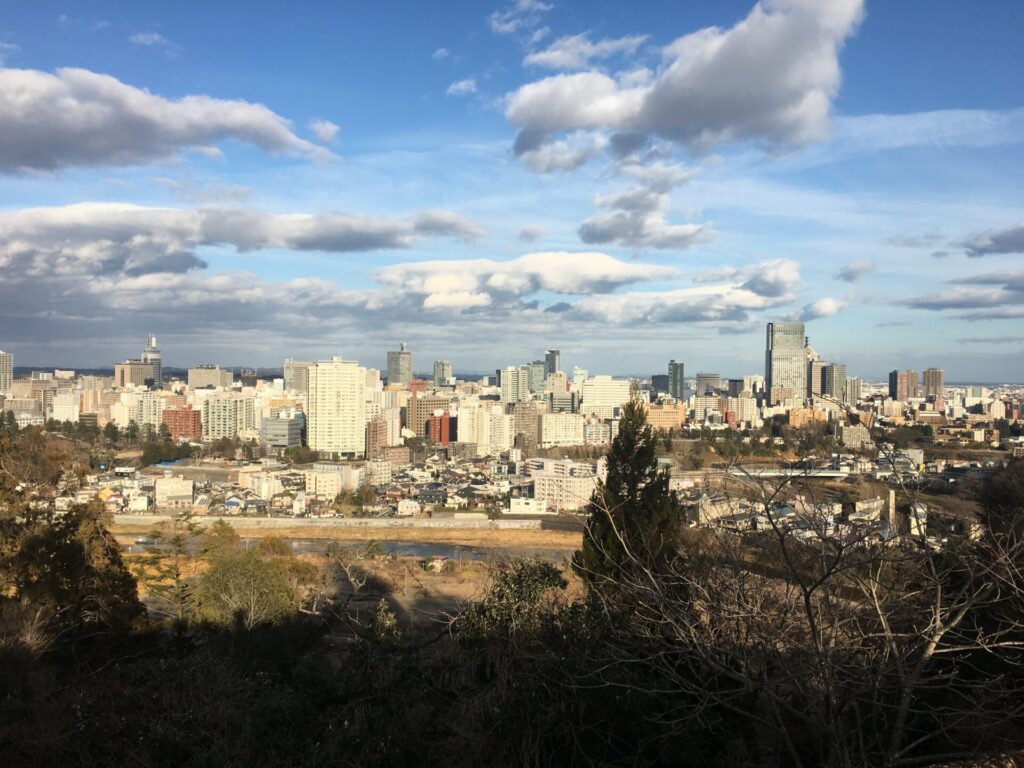
Photo by Dustin Zofchak
If nature isn’t your thing, there is still more than enough to do in the city itself. If you like to party and enjoy the festivals, Sendai doesn’t run short of that either. Its Tanabata festival and Jozenji Streetjazz Festival are the largest of their kind in the country. Don’t worry, Jozenji isn’t purely jazz. It’s now all kinds of genres. Of course, the most important thing to eat while in Sendai is gyutan. While cow tongue doesn’t sound all that appetizing, it is one of my favorite things to eat and Sendai is famous for it. It’s borderline criminal not to eat it while in Sendai.
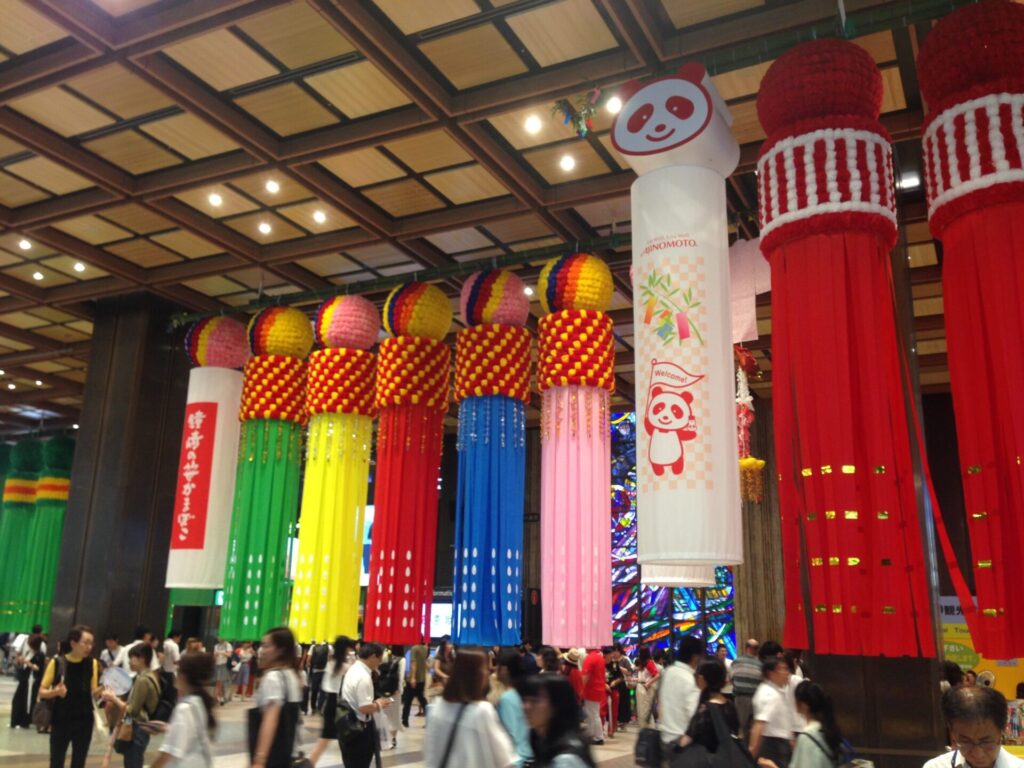
Photo by Dustin Zofchak
Sendai is my favorite city in Japan. It doesn’t get the love and recognition it deserves. It has everything that lovers of Japan want in a Japanese city. It has been important all throughout Japanese history so why not travel there and experience it yourself? Go ahead. Do it.
Photo Credits:
Top Photo: kimkimkaoru on PhotoAC
All additional images taken and provided by Dustin Zofchak, used with permission.
All other content (text) created by the original author and © 2023 MUSUBI by Borderlink
Imagine being sick for the first time in a different country, away from family and friends and all of a sudden, the realization that you’re now a full fledged adult hits you like a brick on the head. Even worse, you’re sick in Japan! A country where you don’t speak the language. It’s easy for you to feel overwhelmed with all of the things you think you need to do. Questions start running through your mind at an alarming rate.
Do you need to tell them your whole medical history? Would you need a translator or do the doctors speak English? Can you just show up at the hospital or do you need an appointment etc. It’s okay, I’m here to help with all three of my hospital cards and the knowledge that comes with being on a first name basis with my doctors in Japan.
First thing, first… Make sure you have your health insurance card. Whether you’re on national or social health insurance is inconsequential. As long as you have your card, you’re starting on the road to making your hospital visit a smooth one. Without it, you would have to pay for the hospital bill out of pocket and that can be expensive! So, make sure you have your health insurance card on you.
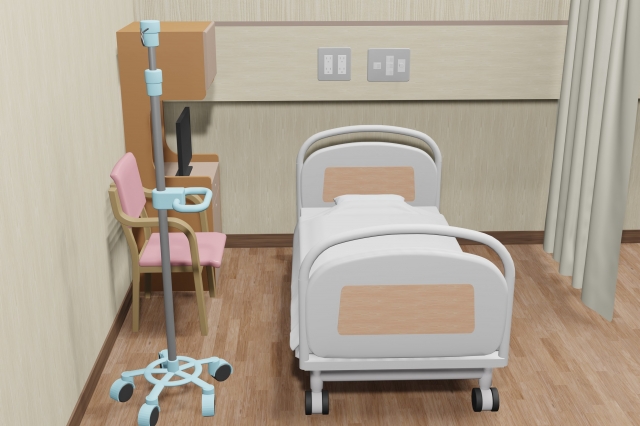
Photo by tomasa
Secondly, depending on what type of doctor you’re trying to see, you might need to make an appointment. If you need to get tested for covid, you ABSOLUTELY NEED to call the hospital or clinic before you leave your house. This is because the hospital might be too full to handle your case at that time due to the high number of covid cases that Japan has been experiencing. Also, it’s a good idea to call before hand if you have any concerns or requests.
For example, I had to go to the Gynecologist once and called to know if they had an English speaking doctor on hand. They did! And not just that, the doctor was female but I could only see this doctor on a specific day. Any other day, I would have to be attended to by a Non-English-speaking (Japanese) male doctor. While, there’s nothing terribly wrong with that, it just made more sense to me to be attended to by a female and English speaking doctor, especially when you realize that I was going there for a gynaecological consult.
Okay! You’ve called before hand and you have your health insurance card and your residence card with you (as a foreigner, this should always be on your person anyway). Now, you can go to the hospital.
When you get there, you can request for an English speaking aide to assist you with your registration at the reception area and if one isn’t available, you can use trusty old google translate to communicate.
You will be given a form to fill. This will ask for basic information like your name and address and also minor health history questions. Fill it out to the best of your ability. You will then be asked for your health insurance card and residence card. They’ll ask for your permission to make a copy of it and return it back to you. This time, your cards will be accompanied with another card. This will be your hospital card. Remember to bring it with you whenever you go to the hospital again.
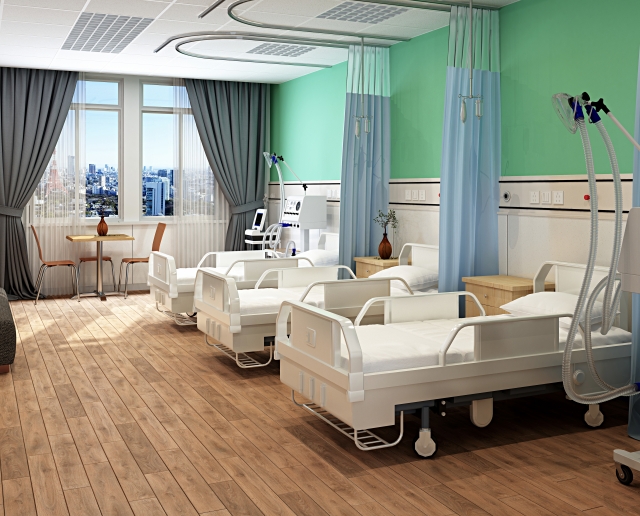
Photo by acworks
Now, you’re ready to see the doctor. If you’re lucky, the hospital has an English speaking doctor. If not, again, trusty ole google translate will come to your aid. Communicate your symptoms as best as you can and hopefully, you’re prescribed drugs that’ll make you feel better soon.
Finally, you’re free! Uhm, not really. Now you’ll have to go back to the reception area and your bill will be presented to you. Yes, you still have to pay even with your health insurance. This is because insurance only covers a portion of the bill and you’ll have to pay the rest of it out of pocket.
Don’t, worry. The bill shouldn’t be a lot. You can pay the bill using an ATM like machine that’s usually in a corner near the reception area. If you’re prescribed drugs, a prescription would also be given to you. You should take that to the pharmacy and get your drugs immediately after you leave the hospital (usually, there are pharmacies near the hospitals).
Now, you’re done. I hope you feel better soon!
Photo Credits:
Additional images by tomasa and acworks
All other content (text) created by the original author and © 2023 MUSUBI by Borderlink
Top photo: Nashiro.k on PhotoAC
OK, today let’s talk about “Food In Japan”. Yes, as soon as someone mentions the two words ‘food’ and ‘Japan’, people normally think of the typical Japanese foods of Sushi, Ramen and Tempura. Well, they are popular Japanese foods but there is a whole lot more to the history of food in Japan, where it originated from, how it is made and how it is eaten.
Rather than me describing all the details, simply ask Mr. Google about the “history of sushi” and ramen and tempura, and you will find pages and pages about it.
The Basics
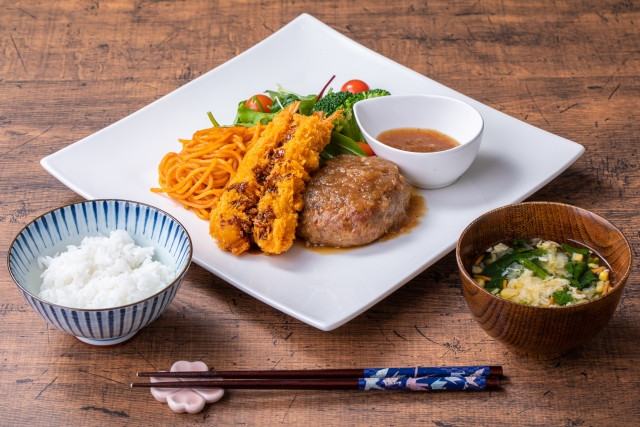
What I want to talk about today is regarding local foods, eating etiquette, and the Dos and Don’ts of eating here in Japan. For starters, here are 7 easy ones;
- DO use the wet towel given to you to wipe your hands once you have sat down
- DO say “Thanks” before and after a meal
Before = ITADAKI MASU
After = GOUCHISOU SAMA DESHITA
- DO use your chopsticks the right way
- DO hold your rice bowl while eating
- DO slurp while eating noodles and drinking Japanese tea
- DON’T eat with your elbows on the table
- DON’T leave food on your plate – basic etiquette – eat everything!
Table manners are a very important thing in Japan, so do be aware of that!
One very interesting thing in the Japanese culture is that it is perfectly OK for a woman to go out to eat (or drink) by herself. No, she is not necessarily looking for a partner, she’s just HUNGRY! (Don’t judge a book by its cover.)
Regional Specialities
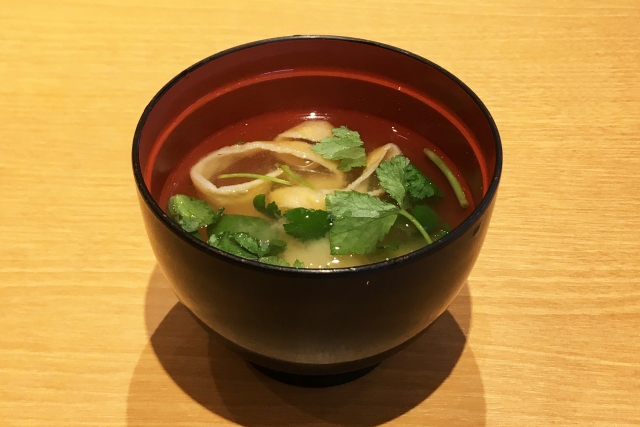
Now to the nitty-gritty of ‘local foods’ – yes, everywhere has them, and yes everywhere’s local dishes are a treat! As before, you can always ask my friend Mr. Google for “local dishes in … “ (add the place name), but even better is simply ask local residents, as they will be happy to share this information. (You can also ask at the City Hall or Community Center – they are always happy to share local goodies, too.)
As an example of the variety in which foods are made depends on where you are. Have a look at these photos of a typical ‘miso soup’ from different areas;
North – Hokkaido miso soup
South – Okinawa miso soup
East – Kanto miso soup
West – Kansai miso soup
Not only the looks, but the aroma and taste are different, as well. Just as numerous types of grapes are used to make numerous types of wines, soy beans (fermented to make ‘miso’) have different varieties, grown in different soils in different locations all have a different taste. Add to that, the different type of salt and KOJI (fungus for fermenting) used, and the amount of time it is actually fermented for, the tastes will be very different. Now, add locally grown ingredients and you end up with a thousand variants to the traditional miso soup ~ and we’re only talking about 1 type of soup!
Local foods and their taste – the sky’s the limit!
Next time, let’s investigate Regional Delicacies – until then, ITADAKI MASU…
Photo Credits:
Top photo: Nashiro.k on PhotoAC
Additional images by くまなな and KeyRabbits
All other content (text) created by the original author and © 2023 MUSUBI by Borderlink
Top photo: RERE0204 on PhotoAC
If you want to immerse yourself in the beauty of seasonal flowers, fall foliage, and nature, Showa Memorial Park (Showa Kinen Koen) is a wonderful place to visit.
Showa Memorial Park is a national park located in Tachikawa City, the suburb of Tokyo. This huge park, spanning over 170 hectares, has a variety of natural spaces, such as spacious lawns, flower fields, ponds, Japanese garden with a bonsai museum, cycling tracks and other leisure facilities.
Best spots for viewing seasonal flowers
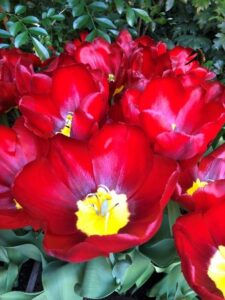 You might know that flower viewing is a time-honored tradition in Japan. Various kinds of seasonal flowers can be enjoyed at this park. Every year in spring, this park attracts many visitors to see its breathtaking flower fields and gardens, especially cherry blossoms, tulips, rapeseed flowers, azalea, poppies and sunflowers.
You might know that flower viewing is a time-honored tradition in Japan. Various kinds of seasonal flowers can be enjoyed at this park. Every year in spring, this park attracts many visitors to see its breathtaking flower fields and gardens, especially cherry blossoms, tulips, rapeseed flowers, azalea, poppies and sunflowers.
As there are about 1,500 trees of 30 kinds of cherry blossoms in the park, it is a popular place for cherry blossoms viewing in Tokyo. The best spot to view cherry blossoms is the park’s “Cherry Blossom Garden” in the north part of the open field. Tulips and rapeseed flowers start flourishing following cherry blossoms. A number of tulips of different shapes and colors decorate the “Serpentine Area” beautifully.
In spring, poppies are also abundant in the park. The “Flower Hill” in the park’s northeast corner, entirely covered with beautiful poppies, is the best spot. It is also interesting to join the free “Poppy Picking Experience” on the last day of its spring flower festival. In summer, you can see hydrangeas and sunflowers; and in fall, cosmoses of various colors bloom in abundance from pink and purple ones to rare yellow ones. Even in winter, you can see camellias and plum blossoms.
Best spots for viewing fall foliage
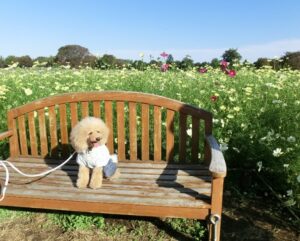 Every year in fall, visitors also flock to see its fall foliage. The best spots for viewing fall colors are the “Ginkgo Tree Avenue” near the park’s main entrance, and the “Japanese Garden” with a large pond surrounded by plenty of maple trees.
Every year in fall, visitors also flock to see its fall foliage. The best spots for viewing fall colors are the “Ginkgo Tree Avenue” near the park’s main entrance, and the “Japanese Garden” with a large pond surrounded by plenty of maple trees.
In the evening, both the avenue and the Japanese Garden are lit up, creating a stunning view different from the daytime.
Showa Memorial Park is so huge and is full of charms year-round. Much like Ashikaga Flower Park, it’s definitely worth visiting!
Photo Credits:
Top photo: RERE0204 on PhotoAC
All additional images taken and provided by Tammy Fujita, used with permission.
All other content (text) created by the original author and © 2023 MUSUBI by Borderlink
